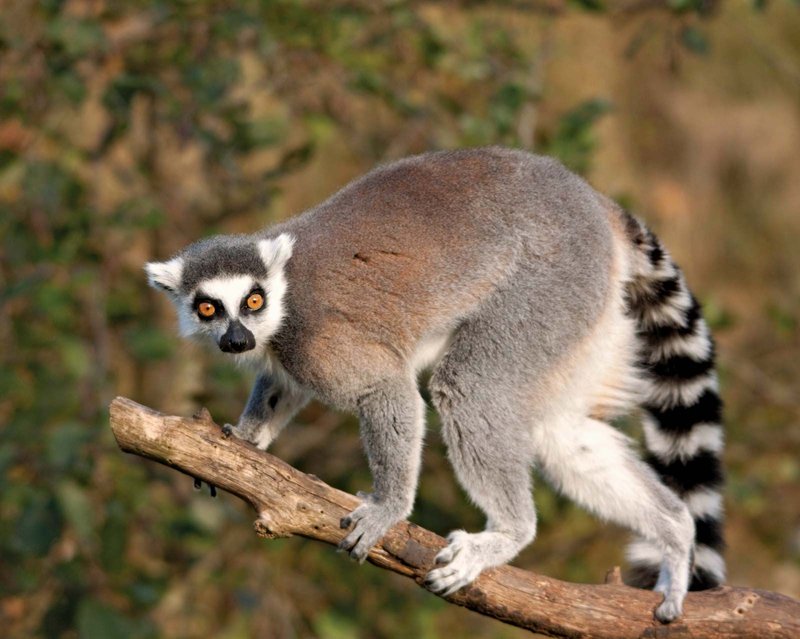
So, what’s going on with these adorable primates? Are they truly endangered? To answer that, we need to dive into various aspects of their lives, their habitats, and the ongoing conservation efforts. Let’s unpack this topic and explore why it’s crucial to support lemur conservation.
What Makes Lemurs Unique?
Lemurs are not just your average primate. They belong to a group called strepsirrhines, which means they have moist noses, similar to dogs. This feature helps them with their keen sense of smell, which they use to navigate their environment and communicate with one another. Most lemurs are social animals and live in groups, called troops, where they show incredible cooperation and bonding.
There are around 100 different species of lemurs, ranging from the tiny mouse lemur—about the size of a mouse—to the larger indri. Each species has its own set of traits and behaviors, making them incredibly diverse. For instance, while some lemurs are known for their loud calls, others might communicate through scents. It’s a rich tapestry of life that we can’t afford to lose.
Unfortunately, their uniqueness also sets them up for failure. Lemurs are found almost exclusively on the island of Madagascar, which makes their survival tightrope even thinner. As Madagascar faces environmental challenges, so do its native creatures. But what exactly puts lemurs in danger?
Threats Facing Lemurs
Lemurs confront several significant threats that contribute to their status as endangered animals. Here are the main culprits:
- Deforestation: One of the biggest threats is habitat loss due to logging and agriculture. As forests are cut down to make way for farms or infrastructures, lemurs lose their homes. Without trees to climb and food to eat, many species are at serious risk.
- Illegal Wildlife Trade: Lemurs are often captured and sold in illegal pet markets, further diminishing their wild populations. When people take them from their natural habitat, it disrupts the delicate balance of their ecosystem.
- Climate Change: Changing weather patterns can alter the forests where lemurs live. Less rainfall can lead to degraded habitats and reduced food availability.
Every one of these factors brings lemurs closer to extinction, with estimates suggesting that over 90% of lemurs are currently threatened. It’s a sobering reality that reflects the larger issues facing many species around the world.
Current Conservation Efforts
Conservationists are hard at work trying to save lemurs from vanishing. Various organizations and grassroots movements focus on protecting lemur habitats and raising awareness about the challenges they face. Here are some promising strategies:
- Protected Areas: Establishing national parks and reserves helps safeguard lemur habitats from deforestation. Places like Andasibe-Mantadia National Park and Ranomafana National Park provide safe havens for many species.
- Community Involvement: Engaging local communities is critical. When locals understand the value of lemurs and their role in the ecosystem, they’re more likely to protect them. Education programs often focus on sustainable practices that benefit both people and wildlife.
- Research and Monitoring: Scientists are constantly studying lemur populations and behaviors to understand their needs better. This research helps create targeted conservation strategies that are more effective.
These efforts make a significant difference, but it’s clear that global cooperation is necessary for lasting change. Without collective action, we risk losing both lemurs and the biodiversity they help sustain.
The Role of Ecotourism
Ecotourism can be a powerful tool in lemur conservation. When people travel to Madagascar to see these beautiful creatures in their natural habitat, tourism can bring much-needed funds to support conservation projects. Here’s how it works:
1. Economic Incentive: Tourism provides income for local communities, allowing them to rely less on logging and agriculture.
2. Education: Visitors learn about the importance of lemurs and the challenges they face, spreading awareness far beyond Madagascar.
3. Support for Conservation: Many ecotourism companies invest a portion of their profits back into local conservation efforts, helping to protect habitats and promote sustainable practices.
However, it’s crucial for ecotourism to be done responsibly. Overcrowding and exploitation can harm the very environments we aim to protect. So, if you ever plan to visit Madagascar, consider choosing an operator that prioritizes ethical practices and contributes to local conservation initiatives.
How You Can Help
Feeling inspired to pitch in? There are plenty of ways individuals can help lemurs without having to hop on a plane to Madagascar:
- Spread the Word: Sharing information about lemur conservation on social media can raise awareness. Sometimes, all it takes is one passionate post to spark a conversation.
- Support Conservation Organizations: Consider donating to organizations that focus on protecting lemurs and their habitats. Every bit helps!
- Adopt a Lemur: Many conservation groups offer symbolic adoptions, where your contribution supports their work and helps fund research, habitat preservation, and education initiatives.
Remember, small actions can lead to big changes. Each person has the power to make a positive impact.
Lemurs are more than just cute faces; they are vital components of Madagascar’s unique ecosystem. While they face serious threats, conservation efforts are gaining traction, shining a glimmer of hope for their future. It’s essential to recognize that saving lemurs is not just about preserving an adorable species; it’s about maintaining biodiversity and the health of our planet.
Let’s stay informed, support local and global initiatives, and continue to spread awareness. Together, we can help ensure that these incredible animals swing through their treetop homes for generations to come. After all, the future of lemurs hangs in the balance, and with our collective effort, we can tip the scales in their favor.

